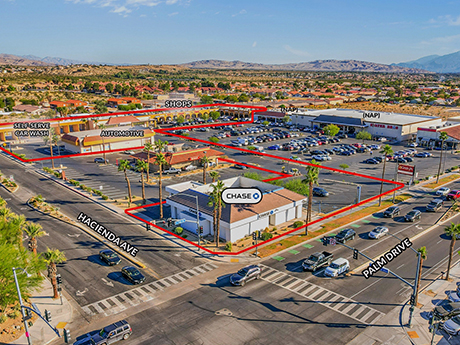— By Brad Umansky, President & Head Coach, Progressive Real Estate Partners —
Occupancy and lease rates have continued to trend higher throughout Southern California’s Inland Empire retail market as a lack of new construction combined with strong retail demand has kept vacancies near record lows. Looking ahead, factors affecting the market are 99 Cent Only’s bankruptcy, the substantial slowdown in sales activity, and the minimum wage increase to $20/hour for fast food workers.
Occupancy & Lease Rates
Occupancy is currently reported at 94.3% by Costar, but removing spaces 10,000 SF or larger, results in occupancy of 97.2% which demonstrates the lack of available shop space. In my 30+ years of working in this market, I have never seen such a lack of options for shop tenants. As a result, when shop spaces become available owners are mostly commanding a higher lease rate than what the previous tenant was paying.
99 Cent Only Bankruptcy Dominates Recent Activity
Since April, when 99 Cent Only declared bankruptcy and promptly decided to liquidate all 371 stores in the chain, industry participants have been analyzing these locations. As of June 2nd, it has been determined that Dollar Tree is acquiring 170 of the locations. Our research indicates that there are 62 stores in the Inland Empire and that Dollar Tree has agreed to take 16 locations. Other retailers rumored to be looking at the remaining sites include Pic “N” Sav, Daiso, Burlington, Absolute Dollar, Five Below, and Savers. This bankruptcy will likely add close to 1M square feet of newly vacant space to the Inland Empire market.
Sales Activity Picking Up
Sales activity through the first 5 months of the year totaled $360M which annualized would equal $860M making it the lowest annual sales volume in the past decade including the $950M achieved in 2020. However, we anticipate that as we move into the latter part of the year there will be enough sellers willing to meet the market knowing that the likelihood of higher prices as a result of lower cap rates is probably not in the future. The resulting increase in sales volume will still not make a great year, but hopefully it will not be the worst. For perspective, 2021 & 2022 were record years with over $2B of sales activity in each year.
Cap Rates
The market is about as inefficient as I have ever seen it. We are back to the days where every nuance about a property affects its price. As a result, apples to apples comparisons are very challenging. In general, it is our firm’s opinion that to move just about any multi-tenant property priced over $5M, the cap rate needs to be 6.5% or higher. The minimum for sub-$5M properties where the chance of an all-cash buyer increases is more in the 6% range. There are some single tenant properties still trading sub-5%, but for the most part a quality single tenant property is going to have to have a 5 in front of it to result in a trade. Once again, each situation is unique.
Impact of $20/hour Minimum Wage
On April 1, 2024, California enacted a $20/hour minimum wage for fast food workers which has become a de facto minimum wage for just about all restaurant workers. The impact of this legislation is in the beginning stages. We are seeing an increase in the use of technology for placing orders, outsourcing of delivery to 3rd party apps, and rising prices. We are hearing that franchisees are taking a very close look at each location as leases come due to determine the viability of whether the location can handle the wage increase by increasing prices at the location. With the exception of Rubio’s recent announcement to close 48 CA locations, there have not been any widespread announcements of closures tied to the increase in minimum wage.
Virtually No Distress in Any Product Type
I recently participated in a conference that featured Inland Empire experts from all segments of commercial real estate including retail, office, industrial and multifamily. Across the board, no one indicated that there is any significant distress in the Inland Empire commercial real estate marketplace. For those that are hoping for some REO opportunities, this will likely not occur as lenders seem to have learned that they are not good operators and are much better off either working with the existing borrower or selling the loan at a discount to someone else who can either foreclose or do a loan workout.
Conclusion
In conclusion, the Inland Empire retail market remains strong, but it certainly seems more complicated than usual with the outlook for the balance of 2024 remaining cautiously optimistic.


